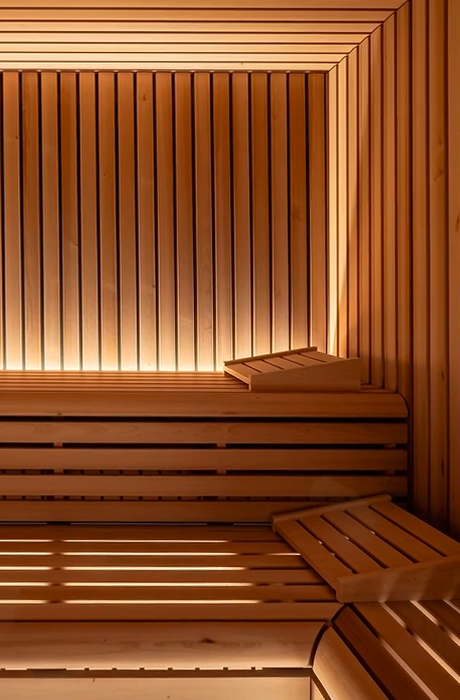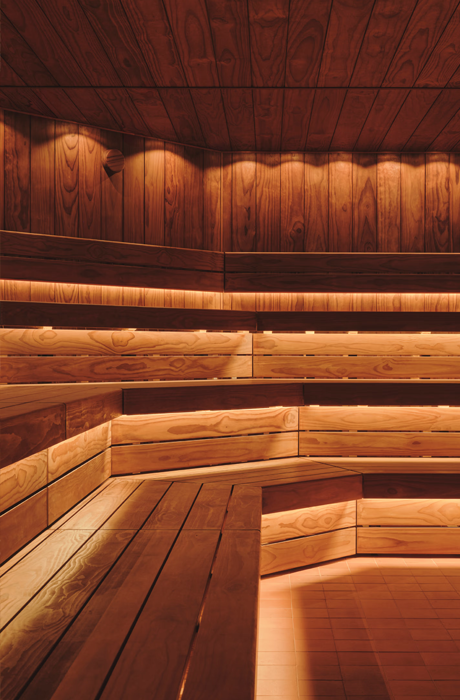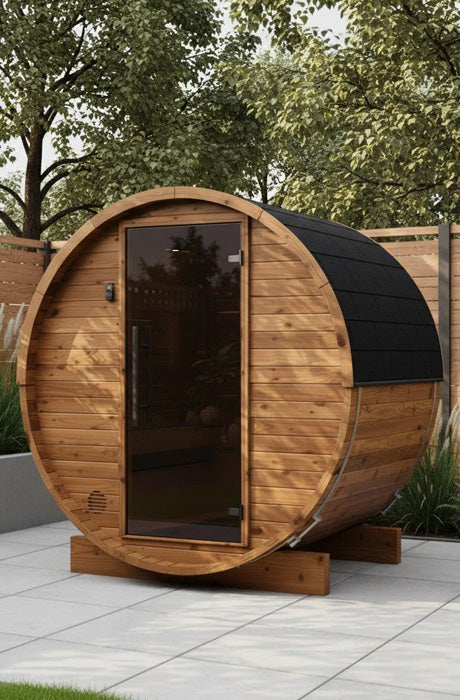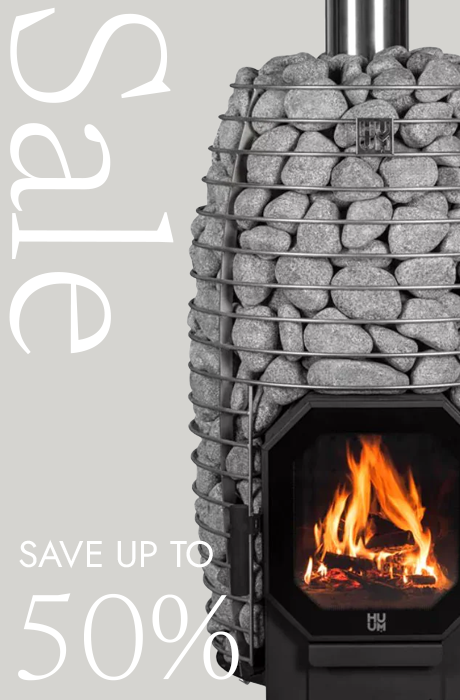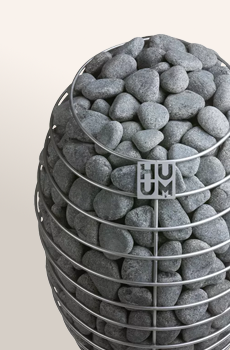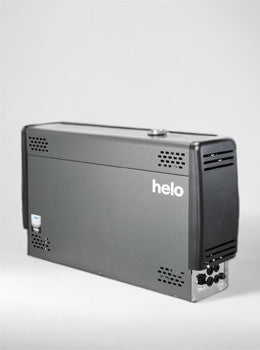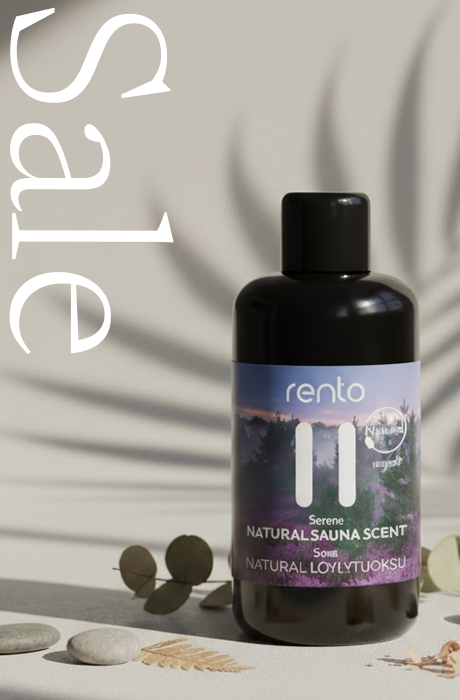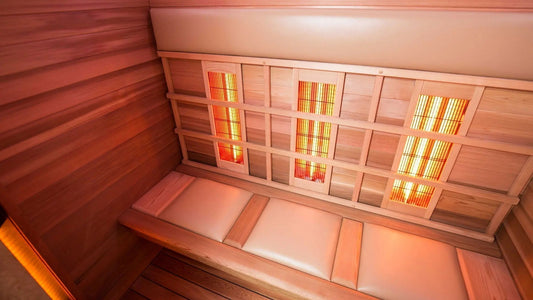
Infrared Sauna VS Traditional Sauna: Which One Wins?
Infrared sauna vs traditional sauna is a growing conversation as infrared saunas gain popularity year after year. With so much information, and misinformation, circulating about the benefits and effects of regular sauna use, especially when it comes to infrared saunas, it can be hard to separate fact from hype. This guide was created to inform, not persuade. Rather than pushing one type over another, our aim is to offer a straightforward look at the differences between traditional and infrared saunas, backed by trustworthy, peer-reviewed research.
At Finnmark, we believe deeply in honouring the rich culture and tradition of the sauna, which has been cherished for centuries for its numerous health benefits, relaxation, and social connection. Our goal is to help you appreciate these traditions while exploring modern innovations, so you can select the sauna that best suits your lifestyle, wellness goals, and personal preferences.
If you’re ready to discover which sauna is right for you, Contact Finnmark Today. Our expert advisors are here to discuss your needs and help you create the ideal sauna experience for your home.
In this Guide, We’ll Cover:
-
Infrared VS Traditional Sauna: Overview
-
Infrared Sauna Benefits vs Traditional Sauna Benefits
-
Are Infrared Saunas Better Than Traditional?: Pros & Cons
-
Infrared VS Traditional Sauna: Public Awareness & Misinformation
-
Are Infrared Saunas Better Than Traditional FAQ’s
-
Difference Between Infrared Sauna and Regular Sauna: Summary
-
Infrared Sauna Vs Traditional Sauna: How Finnmark Can Help
Infrared VS Traditional Sauna: Overview
Before we explore the deeper differences and unique benefits of infrared vs traditional sauna use, it’s helpful to begin with a brief overview that lays the groundwork. This section introduces the fundamental contrasts between these two sauna types - the primary differences between traditional and infrared saunas are their temperatures and heating methods.
We’ll also honour the roots of the traditional sauna experience, a time-honoured practice deeply embedded in Nordic culture – more than just a method of relaxation, the traditional sauna has long been a symbol of community, wellness, and ritual.
Infrared Vs Traditional Sauna: A Snapshot
Traditional Sauna
A Traditional Sauna, often referred to as a Finnish sauna, is typically a wooden room or structure that uses a sauna heating unit and heated stones to warm the air. Water is poured over Sauna Stones to produce steam, creating a hot, humid atmosphere known as löyly.
Temperatures can range anywhere between 70°C to 110°C, and it’s the heated air that warms the body and induces sweating. The level of humidity can be adjusted by the bather, usually kept between 5% to 15%, depending on personal preference. Traditional saunas are often larger in size and can comfortably accommodate several people at once (larger cabins fitting up to 6 or 8-10 users). Many bathers also enjoy aromatherapy, either from natural sources like authentic birch whisks and Wood-Burning Heaters, or from aromatherapy scents and oils added to the water.
When using a traditional sauna, this ritual typically includes staying in the sauna room for anywhere up to 30 minutes, after which some may choose to get out and take a cold shower or cold plunges (complete submersion in cold water) before repeating the process as many times as is desired. This cycle of hot and cold is used to improve circulation and muscle function, stimulate the immune system, and also release endorphins (1).

Infrared Sauna
In contrast, the infrared sauna, also known as a far infrared sauna or simply an IR sauna, is a more modern type of sauna. Typically constructed from wood or plastic, an infrared sauna is a compact enclosure that uses infrared ceramic, Incoloy, or carbon panel heaters to emit far-infrared light. Unlike traditional steam saunas, infrared saunas work by allowing this light to directly penetrate the skin’s surface – the body absorbs this radiant heat, resulting in a gradual warming effect.
This heating method typically keeps the air temperature between 50°C and 60°C, significantly lower than traditional sauna temperatures. Because infrared saunas don’t produce steam unless an additional generator is installed, the environment is usually much drier and more comfortable, allowing for longer, milder infrared sauna sessions. In terms of size, infrared saunas are generally more compact than other saunas, often seating just one to four individuals.
Understanding Sauna Culture & Traditions
When discussing saunas, it's important to capture and understand the culture and traditions behind them. In Nordic countries like Finland and Estonia, sauna culture is deeply woven into daily life. The traditional sauna’s history spans an incredible 10,000 years. Even in the UK, saunas dating back to Neolithic times have been discovered, showing that the concept of heat therapy and sweating for wellness has long-standing global roots.
Over time, these spaces have become centres for more than just physical cleansing. A traditional sauna session often embodies a sense of relaxation, social bonding, and emotional healing. They’re a place to slow down, enjoy quiet moments, or share conversation in a tranquil setting – free from distractions and daily stresses.
The infrared sauna is a modern invention developed to meet demand in the US, where power restrictions and flue regulations made traditional saunas difficult to install. Often not recognised as true saunas by traditional sauna societies, especially in Finland, infrared saunas were designed to mimic the experience using radiant heat and steam generators. While they offer some infrared sauna benefits, many believe they fall short of the holistic experience and rich cultural significance that traditional saunas provide.
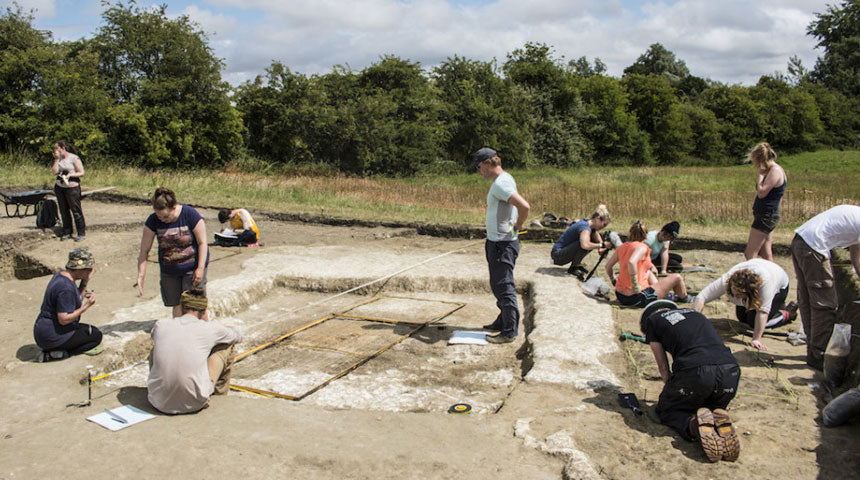
Infrared Sauna Benefits vs Traditional Sauna Benefits
While exploring the difference between infrared sauna and regular sauna, it's essential to understand the unique benefits they provide. This can help you decide which sauna experience best suits your personal health goals, preferences, and lifestyle.
Traditional Sauna Benefits
When discussing traditional sauna benefits, it's important to emphasise that there is a wealth of scientific evidence supporting their health effects, particularly when compared to the more limited research surrounding infrared saunas. While infrared sauna benefits have gained traction in recent years for their gentle heat and targeted therapy, traditional saunas continue to offer a more comprehensive and well-documented range of advantages.
Boosts Immune System
The combination of intense heat and steam encourages the body to sweat deeply, This process supports healthy skin, boosts the immune system, and contributes to overall vitality.
Improved Cardiovascular & Heart Health
The high temperatures experienced during a traditional sauna session cause blood vessels to expand, improving circulation and lowering blood pressure (2). Regular use has been linked to improved cardiovascular function and heart health, with studies indicating reduced risks of heart disease through consistent sauna therapy (5).
Read more here on how using saunas helps cardiovascular health.
Muscle Recovery & Pain Relief
Steam and radiant heat generated by the traditional sauna heater experience help soothe sore muscles and joints. Traditional saunas work effectively to support muscle recovery, ease stiffness, and provide natural pain relief, especially after exercise or physical strain (2).
Read more here on how using saunas helps muscle recovery.
Preventing Types Of Diseases
When looking into traditional sauna benefits, there has been emerging research highlighting its role in disease prevention. Regular use of traditional steam saunas has been associated with a reduced risk of developing serious conditions, including memory-related diseases like dementia and Alzheimer’s (3).
Read more on how saunas help prevent dementia and alzheimer's here.
Studies have also shown promising links between frequent sauna sessions and a lower risk of pneumonia (4), improved arterial stiffness (5), and reduced incidence of respiratory diseases (6). These benefits appear to be unique to traditional sauna use, likely due to the specific combination of heat, steam, and cardiovascular activation it provides.
Mental Wellbeing & Stress Relief
Traditional sauna sessions are renowned for their deep relaxation and mental health benefits. The calming heat and steam help reduce cortisol levels, ease anxiety, and promote mental clarity. Studies reveal that relaxation, stress relief, improved mood, sleep, and social connection were among the top reasons people choose traditional steam saunas (7). This unique sauna experience not only soothes the body but also supports emotional wellbeing, making it a powerful tool for stress management and self-care.

Read more on how using a sauna helps your mental health here.
Infrared Sauna Benefits
When considering infrared sauna benefits, they can offer many of the same positive effects associated with traditional saunas, including improved cardiovascular health, enhanced muscle recovery, effective stress relief, and better mental wellbeing. Infrared saunas provide a unique form of heat therapy that can promote relaxation and support overall wellness goals.
However, it’s important to understand that the scientific evidence backing these benefits is still limited compared to the well-established and extensively researched health advantages of traditional saunas. While infrared saunas continue to grow in popularity due to their convenience and milder heat, ongoing research is needed to fully validate many of the health claims made.
Users should approach these benefits with an informed perspective, recognising that traditional sauna therapy remains the gold standard in terms of proven health outcomes.
Does Less Heat Mean Fewer Health Benefits?
The impact of lower heat on sauna health benefits remains unclear. While traditional saunas typically operate at high temperatures between 70°C and 110°C, creating intense heat exposure that promotes sweating and cardiovascular responses, infrared saunas use gentler heat – usually around 50°C to 60°C – delivering radiant heat that warms the body more directly.
Because infrared saunas expose the body to lower air temperatures, it is still uncertain how this affects the full range of sauna health benefits such as, improved circulation, and heart health. Scientific research on the relationship between heat intensity and health outcomes is limited, especially regarding infrared saunas. Some studies suggest that the lower temperatures might mean a milder effect, while others indicate infrared heat may provide unique benefits through deeper tissue penetration.
Ultimately, more research is needed to understand how reduced heat exposure compares to traditional high-heat sessions in terms of long-term wellness benefits. Personal preference and individual wellness goals often guide the choice between the two sauna types.

Infrared Radiation Produced By Both Traditional & Infrared
It’s a common misconception that infrared saunas are the only type of sauna that emit far-infrared radiation. While it’s true that infrared saunas are defined by their direct use of infrared light to heat the body, it’s important to understand that traditional saunas also emit far-infrared radiation, often in even greater amounts (8).
This is because all types of saunas, whether infrared or traditional steam, require a significant energy input to generate heat. That energy, in turn, produces far-infrared radiation as a by-product. In fact, due to their higher-powered sauna heaters and elevated air temperatures, traditional saunas often emit more far-infrared radiation than many modern infrared saunas.
So while infrared sauna benefits are frequently highlighted in wellness spaces, it’s worth noting that traditional sauna sessions also deliver the same benefits, and in some cases, more. The combination of radiant heat, hot air, and heated stones can contribute to deeper heat therapy, greater sweating, and wider sauna health benefits.

Are Infrared Saunas Better Than Traditional?: Pros & Cons
Are infrared saunas better than traditional ones? To answer this, it’s important to consider the unique pros and cons of each type. This section explores the advantages and disadvantages of an infrared sauna vs a traditional sauna to help you choose the ideal sauna experience.
Traditional Sauna - Pros & Cons
Traditional saunas, often referred to as Finnish saunas or traditional saunas, are known for their numerous health benefits supported by extensive studies. The sauna therapy provided by heated stones and steam creates an authentic sauna atmosphere. This traditional sauna session offers a complete sauna experience that many find unmatched in terms of relaxation and stress relief and overall wellness benefits.
However, traditional saunas can be more costly to install and maintain due to their heating method, energy consumption, and the need for proper Ventilation. The cost and upkeep might be a consideration for those looking at different types of saunas for their home saunas or wellness spaces. Despite these disadvantages, many sauna bathers value the authentic heat therapy and social aspect that traditional saunas provide.
Infrared Sauna - Pros & Cons
Infrared saunas, or IR saunas, offer many of the same benefits as traditional saunas. They are typically easier to install in modern sauna setups, cost less to run, and have a lower risk of fire hazards compared to traditional saunas with heated stones and high heat exposure. Their compact size makes them a convenient choice for many infrared sauna companies focusing on home saunas.
On the downside, as previously discussed, the research on infrared sauna benefits is more limited compared to traditional saunas, and there are concerns regarding potential electromagnetic fields (EMF) risks. EMF are invisible electric and magnetic fields emitted by electrical devices. Some users worry that prolonged exposure to EMF during infrared sauna sessions could have negative health effects, although current research on this topic is limited and inconclusive.
Infrared saunas also tend to accommodate fewer users due to their smaller size and offer a different sauna atmosphere without the steam and hot air typical of traditional saunas.

Infrared VS Traditional Sauna: The Misinformation
If you're comparing an infrared sauna vs traditional sauna, it’s important to separate genuine health information from marketing hype. Both sauna types offer wellness benefits, but misinformation is widespread, and often driven more by sales than scientific evidence.
Misleading Claims About Infrared Sauna Benefits
Infrared saunas are frequently promoted as modern health tools. Many infrared sauna companies claim that these units can support detoxification, accelerate weight loss, boost the immune system, improve skin tone, and even reduce cellulite. These bold promises are frequently amplified through influencers and celebrity endorsements.
While some infrared sauna benefits are supported (such as mild heat therapy for relaxation and stress relief, improved blood flow, and muscle recovery), many of the more dramatic claims lack sufficient scientific evidence. For example, research does not currently support the idea that infrared light exposure alone can cause deep detoxification or fat loss. It's also important to note that infrared saunas work by using radiant heat to warm the body directly, unlike traditional saunas, which rely on ambient air temperature.
Misunderstandings About Traditional Saunas
Despite their long history, traditional saunas often face unfair criticism. In the UK, they are sometimes described as outdated, dry, or uncomfortable. However, this perception usually comes from poorly constructed saunas, where the sauna heater isn’t compatible with water use or where there’s insufficient ventilation, leading to an unbalanced sauna atmosphere.
A properly designed Finnish sauna creates an ideal blend of dry and humid heat using heated stones and water. Pouring water over the sauna heater produces “löyly,” a burst of steam that enhances the sauna session. This carefully managed steam is essential to the authentic sauna experience and delivers numerous health benefits, including relaxation and respiratory support. Unlike other saunas, traditional saunas allow bathers to control the humidity level for comfort and effectiveness, making them a more versatile and immersive type of sauna therapy.
When built to traditional standards with the correct heating method and layout, these sauna rooms support everything from mental well-being to heart health, and offer a cultural richness unmatched by modern saunas.
Price and Construction: Infrared vs Traditional Sauna
Cost Comparison
One of the first things people notice when comparing an infrared sauna vs traditional sauna is the price; when constructed properly, infrared will always be cheaper than a traditional model. This is because Infrared saunas often arrive flat-packed, ready for simple assembly. This convenience reduces installation costs and skill requirements.
Traditional saunas, by contrast, often involve bespoke sauna construction. They require expert knowledge in sauna design, insulation, and ventilation – making them a more significant initial investment.
Sauna Construction and Expertise
Traditional saunas rely on specialist skills and experience, often crafted by sauna providers who understand Finnish sauna culture, sauna heater positioning, and steam room principles. These professional installers ensure proper air temperature, humidity, and vent systems are in place for a genuine sauna experience.
Infrared saunas are made for convenience. They’re mass-produced and don’t require the same design precision, making them cheaper upfront but less authentic in sauna experience.
Material Quality and Sauna Wood Standards
High-quality traditional sauna builds often use premium sauna wood or thermally modified wood , heat- and moisture-treated to withstand intense heat and steam. Sourced sustainably, these materials support durability, sauna atmosphere, and long-term performance. Complying to these regulations ensures the highest standard of product, as Nordic laws, such as those in Finland, regarding sauna construction are far more comprehensive than in the UK.
Infrared saunas, on the other hand, are designed to be cheap. Many are built using generic timber or engineered wood and can lack proper insulation or ventilation. Some low-cost infrared saunas rely on mass-produced, unethically sourced components from overseas countries like China. This is the case in most infrared sauna companies, which source their saunas from third-party websites such as Alibaba.

FAQs: Are Infrared Saunas Better Than Traditional?
Is a traditional sauna session more intense than an infrared sauna session?
Yes, traditional sauna sessions are generally more intense due to higher air temperatures (typically 70°C to 110°C) created by heated stones. This full-room heat leads to a more immersive sweating and heat exposure experience. Infrared saunas operate at lower temperatures (around 40°C to 60°C) and heat the body directly through infrared light, resulting in a gentler session.
Which sauna type is more energy-efficient?
At first glance, infrared saunas appear more energy-efficient. They run at lower air temperatures and use infrared heaters that warm the body directly, meaning they often consume less electricity during a typical sauna session. However, this efficiency can be misleading when viewed in context.
While traditional saunas operate at higher temperatures, they are often better insulated and constructed with high-grade materials for saunas designed for optimal heat retention. This means that once heated, a traditional sauna can maintain its warmth effectively with minimal energy loss; particularly if built to Finnish standards using quality timber and proper ventilation.
As we’ve covered, infrared saunas are typically mass-produced with inconsistent insulation and construction quality, leading to possible energy inefficiencies over time. So while an IR sauna may use less power per session, the long-term performance and insulation of a traditional steam sauna can balance out. Ultimately, energy efficiency depends on build quality, usage patterns, and long-term durability – not just the initial power draw.
Are there any health risks associated with infrared light exposure in saunas?
While infrared saunas are generally considered safe for most users, concerns have been raised about potential health risks associated with prolonged exposure to infrared light, especially in low-cost or poorly constructed units.
Infrared heaters emit far-infrared radiation, which penetrates the skin to produce radiant heat. Though this method of heating is typically gentle, inconsistent manufacturing standards can sometimes lead to elevated electromagnetic field (EMF) emissions. High EMF exposure over time has been associated with possible biological effects, though research remains inconclusive. Reputable infrared sauna companies now offer low-EMF or zero-EMF models to address this concern.
Compared to traditional saunas, which have been studied extensively for their long-term safety and health benefits, the scientific evidence around infrared sauna health risks is still emerging. As with any wellness practice, users should consult a healthcare provider before beginning regular infrared sauna sessions, particularly if they have underlying health issues or are pregnant.
Can infrared saunas replicate the löyly experience of a traditional sauna?
No, infrared saunas cannot replicate the löyly experience of traditional steam saunas. Löyly is created by pouring water over heated stones, producing a burst of steam and humid heat that defines the traditional sauna atmosphere.
Infrared saunas work differently. They use infrared heaters to emit radiant heat that directly warms the body, without heating the air or generating steam. The result is a dry sauna environment with lower air temperature and no humidity unless a separate steam generator is added (which is rare). For those seeking a more complete, authentic sauna atmosphere, especially one rooted in sauna culture and tradition, traditional saunas remain unmatched.
Discover Authentic Sauna Solutions with Finnmark
References
[1] Pilch, W et al (2013) ‘Effect of a Single Finnish Sauna Session on White Blood Cell Profile and Cortisol Levels in Athletes and Non-Athletes’ Journal of Human Kinetics (39) pp. 127-135. Available at: https://www.ncbi.nlm.nih.gov/pmc/articles/PMC3916915/
[2] Hussain, J and Cohen, M (2018) ‘Clinical effects of regular dry sauna bathing: A systematic review’ Evidence-Based Complementary and Alternative Medicine. Available at: https://www.ncbi.nlm.nih.gov/pmc/articles/PMC5941775/pdf/ECAM2018-1857413.pdf
[3] Laukkanen, T et al (2017) ‘Sauna bathing is inversely associated with dementia and Alzheimer's disease in middle-aged Finnish men’ Age and Ageing 46(2) pp. 245-249. Available at: https://academic.oup.com/ageing/article/46/2/245/2654230
[4] Kunutsor, S.K. et al (2017) ‘Frequent sauna bathing may reduce the risk of pneumonia in middle-aged Caucasian men: The KIHD prospective cohort study’ Respiratory Medicine (132) pp. 161-163. Available at: https://www.sciencedirect.com/science/article/pii/S0954611117303578
[5] Laukkanen, T et al (2017) ‘Acute effects of sauna bathing on cardiovascular function’ Journal of human hypertension (32) pp. 129-138. Available at: https://www.nature.com/articles/s41371-017-0008-z
[6] Kunutsor, S et al (2017) ‘Sauna bathing reduces the risk of respiratory diseases: a long-term prospective cohort study’ European Journal of Epidemiology 32(12) pp. 1107-1111. Available at: https://link.springer.com/article/10.1007/s10654-017-0311-6
[7] Hussain, J. N, Greaves, R.F, Cohen, M (2019) ‘A hot topic for health: Results of the Global Sauna Survey’ Complementary Therapies in Medicine. (44) pp. 223-234. Available at: https://www.sciencedirect.com/science/article/abs/pii/S0965229919300998
[8] Vatanserver, F and Hamblin, M.R. (2012) ‘Far infrared radiation (FIR): its biological effects and medical applications’ Photonics and Lasers in Medicine. (4) pp. 255-266 Available at: https://www.ncbi.nlm.nih.gov/pmc/articles/PMC3699878/pdf/nihms426504.pdf
